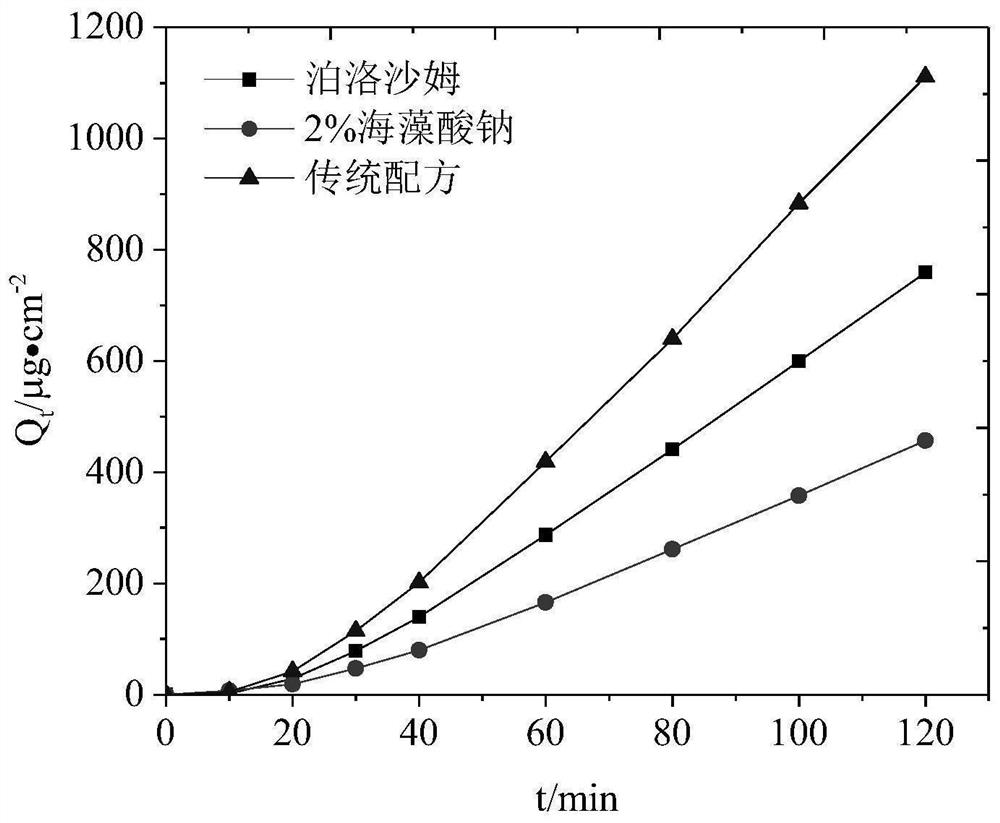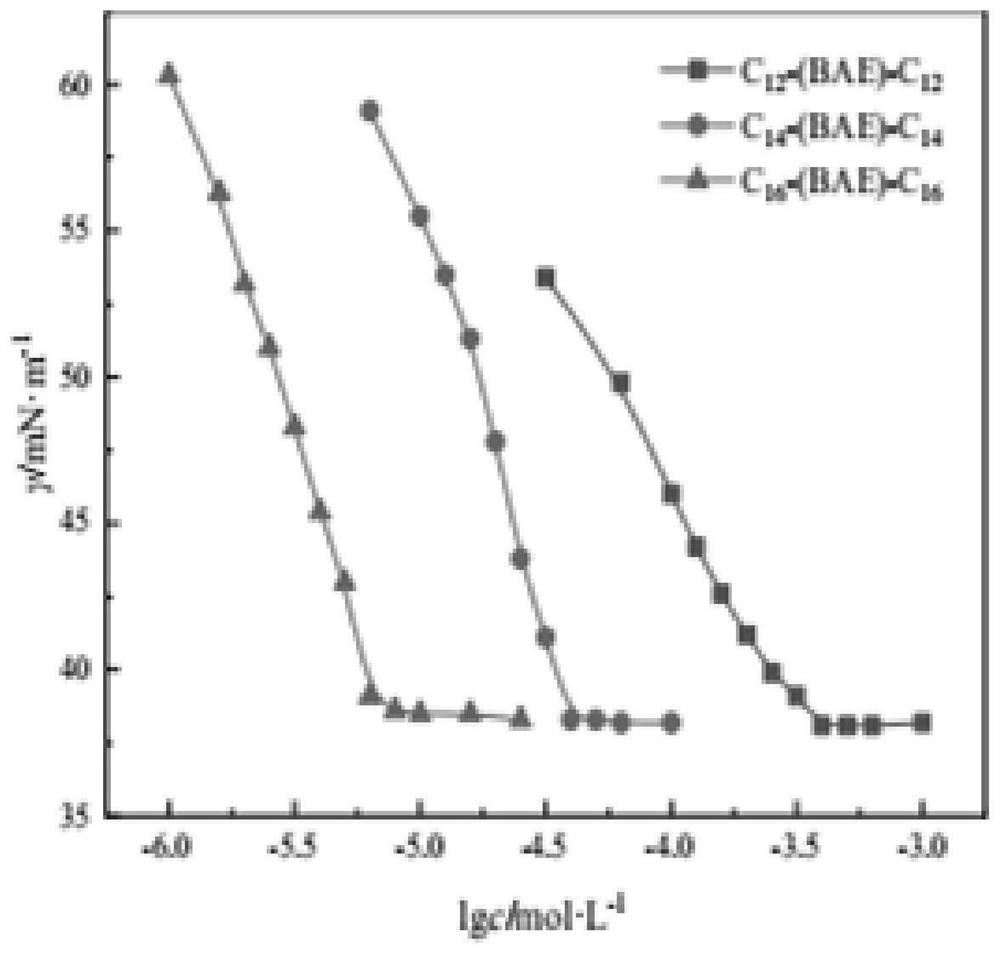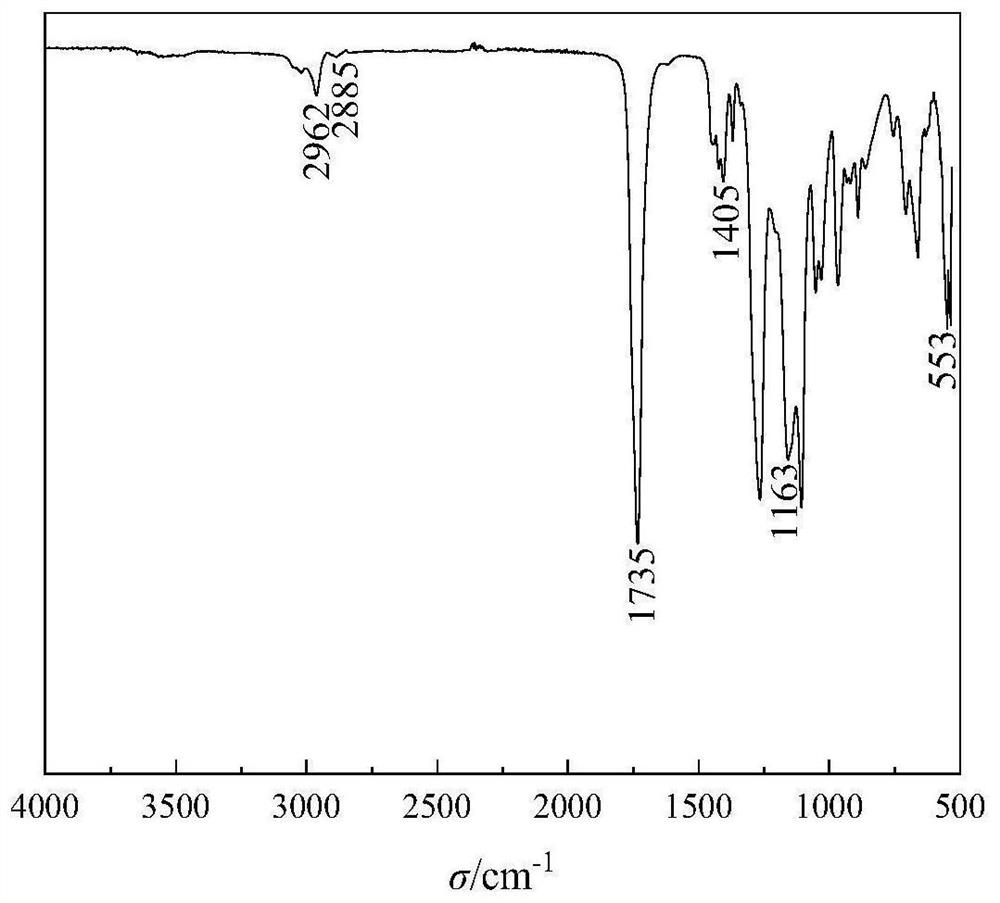An intelligent temperature-sensitive hair dye that reduces the entry of aniline substances into the human body and its preparation method
A temperature-sensitive, hair dye technology, applied in the field of designing cosmetics, can solve the problems of scarcity of colors, long dyeing time, difficult extraction, etc., and achieve the effects of rich color selection, good color fastness, and short dyeing time
- Summary
- Abstract
- Description
- Claims
- Application Information
AI Technical Summary
Problems solved by technology
Method used
Image
Examples
Embodiment 1
[0048] Example 1: Study on the sustained release properties of Poosham hydrogel on phenylenediamine transdermal
[0049] The traditional hair dye formula [A agent (mass percent): deionized water 93.2%, 2% phenylenediamine, 1% emulsified silicon oil, 0.5% sodium sodium sulfate, EDTA; ammonia water; B dose: from 93.5%, hydrogen peroxide 6%, Carropham 0.5%], poloxham, and polithamimosham adding alginate to 2H transdermal experiments, and control the concentration of phenylenediamine 20 mg / ml, taking 2 mL under transdermal experiment at 32 ° C, the effect of removing oxidant, the experimental results figure 1 :
[0050] As can be seen from the experimental results of the above figure, the traditional hair dye has the largest transdermal amount of 1110 μg / cm2, and the amount of poloham hydrogel transdermal is decreased without adding the oalcate. It is 758μg / cm2, adding seaweed. The amount of water gel of sodium sodium is further reduced, and less than half of the transdermal amo...
Embodiment 2
[0051] Example 2: Preparation of cationic bonchri surfactants containing an amide group and an ester functional group
[0052] (1) Preparation of 1,2-bis (bromoacetoxy) ethane
[0053] The reaction was distilled with bromoacetic acid (0.21 mol) and ethylene glycol (0.1 mol) at 130 ° C without solvent conditions for 6 h. After the reaction is completed, the reactive crude mixture was first washed twice with 200 ml of deionized water, and then washed once with a mixed solution of 100 ml of methanol water (where 80 ml of methanol, 20 mL) was washed once, and the washed product was dissolved in trichloromethane. Then dry with anhydrous sodium sulfate, and finally evaporated to remove dichloromethane to give an oily liquid. The yield of the reaction was 47% by the total mass quality of the above-mentioned product was 47%, and by IR and 1 H NMR characterizes the purified target compound.
[0054]
[0055] (2) Preparation of N- [3- (dimethylamino) propyl] fatamide
[0056] First, fatty...
Embodiment 3
[0087] Example 3: The specific components of the prepared A agents and B agents are as follows:
[0088] A agent:
[0089]
[0090]
[0091] B dose:
[0092]
[0093] The above A and B binders are mixed together, stir well, apply it on a clean hair, attenuately maintained 30 minutes, and then clean the hair and clean it.
PUM
 Login to View More
Login to View More Abstract
Description
Claims
Application Information
 Login to View More
Login to View More - R&D
- Intellectual Property
- Life Sciences
- Materials
- Tech Scout
- Unparalleled Data Quality
- Higher Quality Content
- 60% Fewer Hallucinations
Browse by: Latest US Patents, China's latest patents, Technical Efficacy Thesaurus, Application Domain, Technology Topic, Popular Technical Reports.
© 2025 PatSnap. All rights reserved.Legal|Privacy policy|Modern Slavery Act Transparency Statement|Sitemap|About US| Contact US: help@patsnap.com



